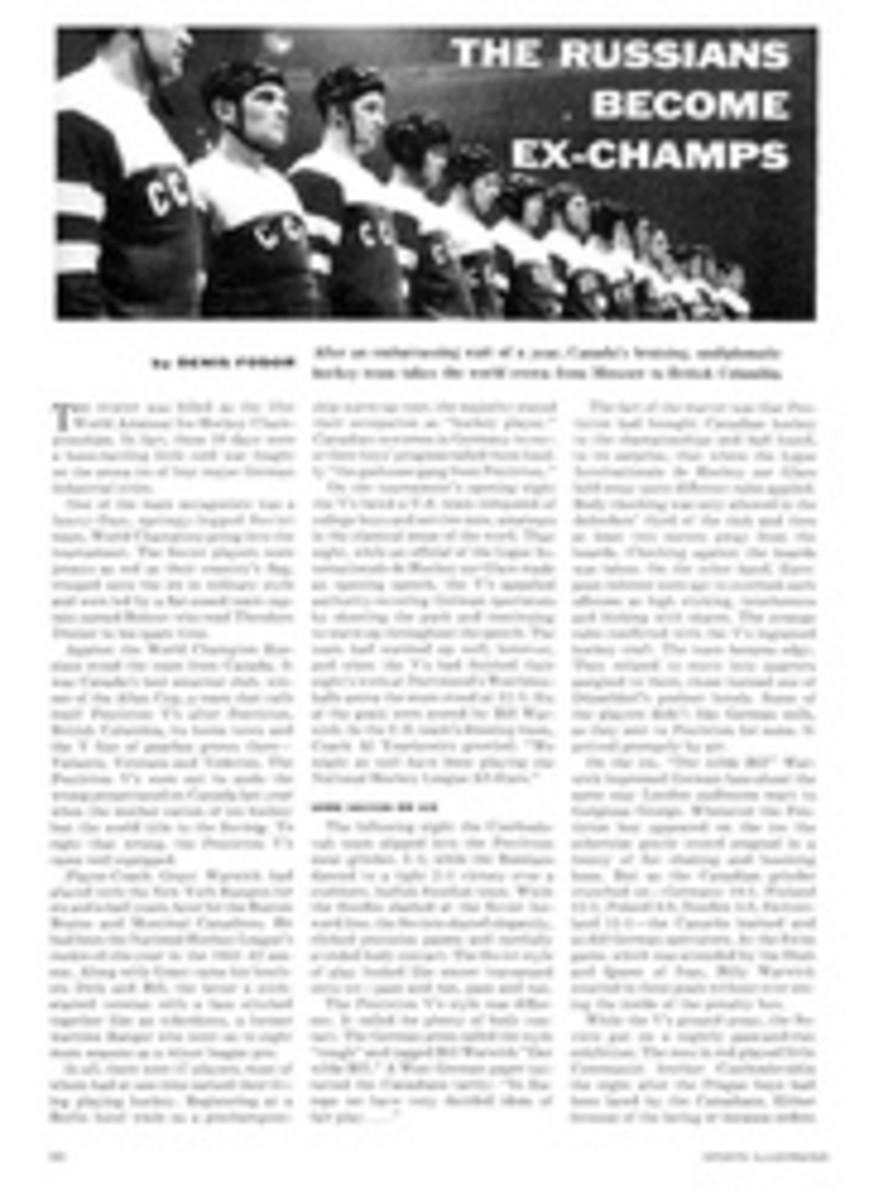
YOU SHOULD KNOW: if you want to take up fly tying
You can do it
Seventeen hundred years ago a Macedonian sheepherder noticed fish jumping out of the water to seize a reddish-colored fly that hovered over the water; he wrapped some crimson wool around a hook, added two neck feathers from a red rooster and caught a brown trout from the Astraeus River. If you have the gumption of a Macedonian sheepherder and enough dexterity to tie your shoelaces, you too can make fish flies.
Why flies?
Most fishermen admit that fly-fishing requires more skill and knowledge than spinning, bait casting, trolling, still-fishing or other methods; they hold that the satisfactions are proportionately greater. Many trout fishermen fish with flies because they get pleasure from the study of natural aquatic insects, the subtleties of color and shape of the artificial flies and from looking through a well-stocked fly box in which certain patterns and a few well-chewed lures evoke pleasant nostalgias. ("Not like looking through a can of worms or a minnow bucket," says one fly man.) And of course there are many days on trout stream or bass pond when the fly caster will outscore the bait or spinning man 10 to one. (Fly-fishers also point out that fly-hooked fish can usually be released uninjured, and many trout fishermen return all undamaged fish to the water.)
Imitation
Flies consist of various combinations of fur, wool, hair, feathers, silk and tinsel fastened to a hook with thread. Dry flies are constructed to trap air between hackle fibers and thus float; wet flies are constructed to sink; both types are generally tied to represent, in size and color, the natural insects that fish feed on and—in the case of streamer flies and bucktails—the small forage fishes on which larger fish prey. Tying is easier than it sounds, but it takes long practice to achieve speed and quality; you'll be pleased with your first efforts but later you'll strip the hooks and retie them to your new higher standards.
Long time no sea
Until fairly recently, flies were considered as strictly fresh-water lures—for trout, salmon and bass—but now many anglers fish with fly rods and flies tied to represent bait fish for small tarpon, bonefish, sea trout, striped bass, snook and many other game species.
Profit and loss
Good store-bought trout flies cost four to eight dollars a dozen; the trickier salmon patterns may fetch up to five dollars apiece. But before you start saving money you must make a capital investment in basic materials: fly-tying vise (50¢ to $10), hackle pliers (20¢ to $1.50), fly-tying scissors ($1 to $2.50), dubbing needle (20¢, or make it yourself by sticking a large needle in a bottle cork for a handle), an assortment of furs for making fly bodies ($1 will buy a basic selection of small pieces), gamecock neck feathers (hackles) in basic colors (grizzly or white-with-black bars, red-brown, ginger, and "blue" dun, natural or dyed), an assortment of light wire hooks (for dry flies) and regular hooks (for wet flies) in sizes 10, 12 and 14, with a few as tiny as 18 or 20 and a few as large as 6 and 4 ($1 to $5 a hundred, depending on quality, fineness of wire and where you buy them), an assortment of barred wood duck, mallard or dyed mandarin duck feathers and other wing materials (wood duck is expensive and scarce, but $1 will keep you in barred mallard for several years). In addition you'll need some black silk thread, sizes 3/0 and 5/0, an assortment of silk floss for bodies, some gold and silver tinsel, a peacock's eyed tail feather and other low-cost items. If you're serious, buy a good vise (in the $5-to-$10 class); an additional ten-spot should put you in business with materials for many hundreds of flies.
Feathers...
Few professional tiers can get enough top-quality hackle in the rarer sizes and colors to meet their needs. Some pros, like Harry Darbee at Roscoe, New York, raise their own roosters in order to get good feathers in scarce colors. (Some amateurs raise birds, too; but gamecocks, which provide the best hackle, are so quarrelsome they must be separately penned and are very disease-susceptible.) But the amateur tier is usually able to accumulate enough top-grade materials to meet his own limited needs. He must be prepared to pay fancy prices for exceptional quality or color in hackle—up to $20 for a natural blue-dun or rusty-dun neck of top quality, and $2 to $5 for good gamecock necks in the commoner colors. Don't buy loose hackles; instead get whole (or split) neck skins with hackle feathers attached and naturally arranged in graduated size and matched sets. The ability to judge hackle quality comes with experience; look for stiff, glossy fibers, with a minimum of soft "web" between them, on a not-too-thick central spine; stiffness can sometimes be gauged by touching fiber points to lips, but this test is one that many fine necks would flunk.
...and feather merchants
Buy materials from mail-order dealers specializing in fly-tying equipment (unless there's such a specialist in your community). Your local tackle dealer can recommend a good firm, or perhaps he can assemble materials for you. Best plan is to decide on three or four basic flies you'll need for your favorite waters, then order only materials needed for those patterns; as you add patterns to your repertory you can buy necessary additional materials (golden pheasant "tippet" feathers for royal coachman tails, for example).
Theory...
By all means, get a good reference manual or book on fly tying. Among the best are J. Edson Leonard's Flies (Barnes, $5), H. G. Tapply's Fly Tyer's Handbook (Crown, $1.50), Ray Bergman's Trout (Knopf, $7.50), Charles Wetzel's Practical Fly Fishing (Christopher, $5), E. C. Gregg's How To Tie Flies (Barnes, $1.75) and Herter's Fly Tying Manual (Herter's, $1.95). There are many such books and manuals, and you may collect an interesting and useful library on the subject.
...and practice
After you've got a good book, don't try to learn fly tying from it. Find a good professional or amateur tier in your neighborhood and arrange to take lessons; one hour of tying under instruction or watching a pro at work is worth 10 books to the beginner. Two one-hour lessons from a tier who knows his (or her) business should be all you need. Some old-time pros will teach you to tie "in the hand" (without a vise) if you wish; this enables you to tie flies at the streamside and will impress fishermen but not fish.
How many patterns?
When you start tying, stick to proved patterns; later you can make your own variations or invent new patterns. Study actual mayflies, stone flies and nymphs on and under the water; then try to tie flies that match them for size, shape and color. Don't let thousands of different fly patterns confuse you. All will catch fish on occasion, and hundreds are "old reliables"—but we've known veteran trout men who used five, three and even one pattern exclusively, in different sizes, and caught more than their quota of fish.
Last step
After you've learned to tie, teach your wife and children; this will keep you in flies and them out of mischief.

